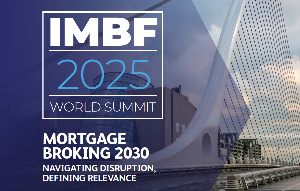
The housing data company says tighter monetary policy has already been priced in by the banks.
CoreLogic chief property economist Kelvin Davidson says it is likely mortgage rates are at, or close to a peak, which is probably the first hurdle now cleared in terms of the housing market downturn getting closer to ending.
The RBNZ has given little away about what’s next for the OCR, but Davidson says it seems that there will be one more 0.25% rise on May 24, with the tightening cycle potentially ending there.
“That said, it’s still too early to sound the all-clear and suddenly expect housing sales volumes to pick up and house prices to find a floor,” he says.
“After all, new borrowers are still facing tough serviceability testing and a continued wave of existing mortgages are yet to be repriced to current rates of around 6.5%.”
He says these will remain challenges for the housing market for a few months yet – especially with the RBNZ wanting to emphasise that they’re not about to ‘go soft’ on inflation and suddenly lower the OCR anytime soon.
Davidson says, however, net migration is now rising, and businesses are looking to retain their existing workers at all costs because of skills shortages. These factors could bolster the housing market.
Meanwhile, although the election is a long way away, some scope for a potential change of government could see mortgage interest deductibility reinstated and also some investor demand returning, he says.
All guns blazing
Westpac chief economist Kelly Eckhold says the bottom line is the RBNZ seems intent on getting the OCR to the level they saw as sufficiently contractionary back in February – that is, an OCR of 5.50%.
“Any movements in the OCR beyond that point will be data-dependent, but it seems likely the base case will be for a further 25bp increase in May.”
Eckhold says it’s likely the RBNZ will retain a tightening bias that will be data-dependent and contingent on the economy and inflationary pressures evolving as required to bring inflation expeditiously back towards the 1-3% target range.
Further increase a split decision
ASB has also pencilled in a further 25bp OCR increase for May. But chief economist Nick Tuffley says it is very much a split decision and will be very data dependent.
He says inflation gauges are showing early signs of turning, and the labour market looks set to gradually loosen up through hiring restraint and accelerating population growth. “Yet those turns did not deter the RBNZ from hiking by 50bps.”
Essentially, Tuffley expects the RBNZ will move again unless data show spare capacity is convincingly opening up and that inflation will pull back more swiftly than the RBNZ is banking on.
“Keep an eye on the Q1 CPI, Q1 labour market data , and Q2 inflation expectations; the key data ahead of the May 24 Monetary Policy Statement and if activity data point to a weak start to 2023, that may also get the RBNZ placing more weight on the notion that monetary policy is biting more effectively than assumed.”



